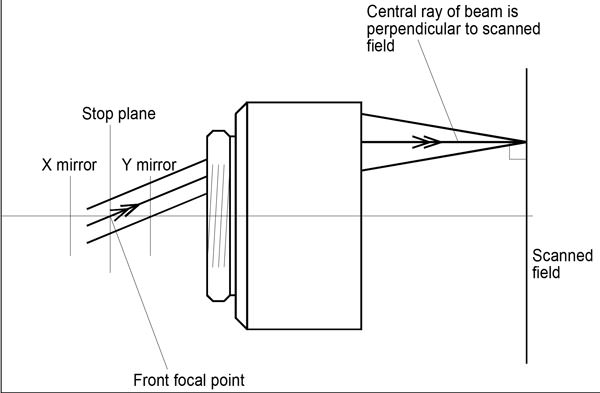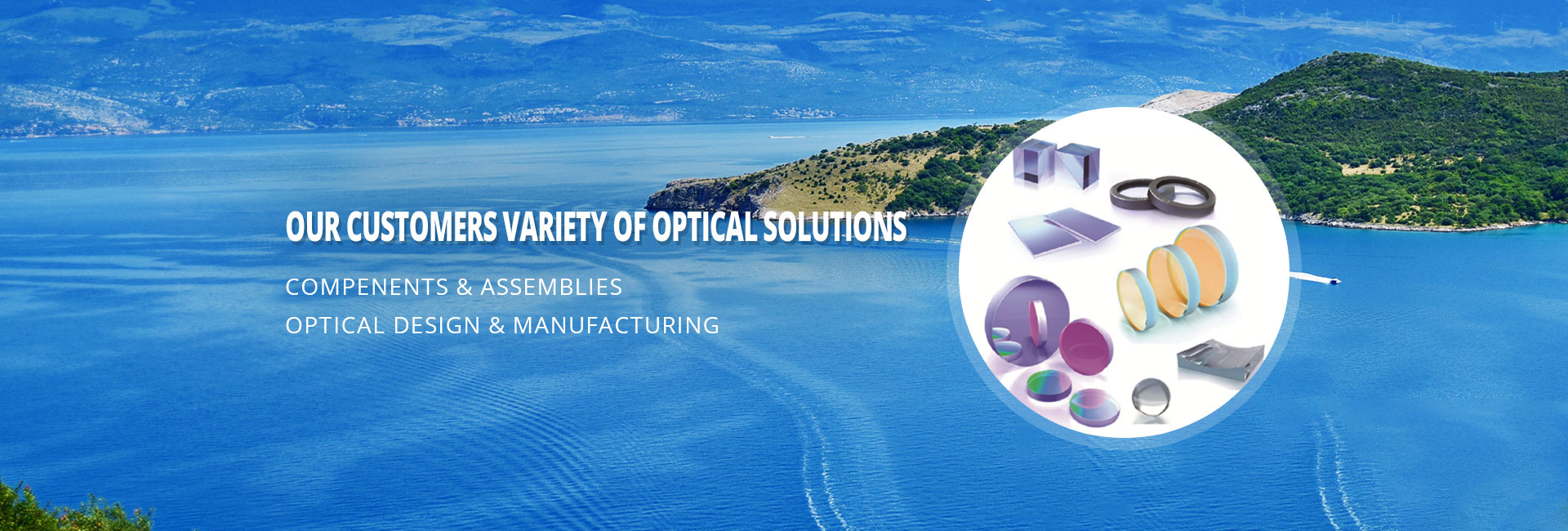The world of photonics is characterized by innovations. Constant fresh developments and technical advancement in our industrial sector always pave the way for new applications in precision optics, optical coatings and optomechanical components.
Share our enthusiasm for the application of optical procedures and technologies – and share our curiosity and the endeavour to do better always.
We will keep you informed about the recent developments in our company.
Telecentric Scanning Lenses
Introduction
Telecentric scanning lenses are a special configuration in which the arrangement of optics are designed to focus down the beam such that it is always perpendicular to the flat field (Figure 10.41). This is accomplished by ensuring that the system ‘stop’ is located at the front focal point of the lens system. The ‘stop’ is located at theposition where the beam is deflected from the axis.

Figure 10.41: Telecentric Scanning Lens
In a single-axis scanning system, this location is at the scanning mirror. For two-axis scanning, the stop is mid-way between the mirrors. In the latter case, since the beam is actually deflected at the mirrors,which are either side of the stop, the focused beam is not quite perpendicular to the flat field. Typically it is a few degrees to the perpendicular.The advantages of using a telecentric scanning lens are they avoid beam ovality that could affect very critical marking applications and drilling holes through a material will not produce an inclined hole. Thetypical practical example of the latter is drilling via holes in printed circuit boards.Telecentric scanning lenses are always multi-element designs supplied in a housing. It should be obviousthat at least one lens element will be larger than the field size to be scanned. In practice, this means thatfor reasons of manufacture and cost, only small field sizes are possible.This in turn implies short focal lengths. Most telecentric lenses will also tend to be customer specific designs. General technical specifications Construction: All lens elements are made from laser grade ZnSe.Housings are made of black-anodised aluminium. Coatings: The standard coating is a low absorption anti-reflection (AR) for 10.6mm, applied to all lens surfaces. Reflectance is less than 0.25% per surface. Otherwavelengths are possible on request. Mounting: Usually this will be a thread, the size of which will be partly determined by the lens design.
Window: Since the lens elements are large and expensive, and working distances will be similar to the (short) focal length, the last lens surface can be prone to coating with process debris.As a result, many customers opt for a protection window as the last element. Please note, however, that this should not been seen as an alternative to debris extraction.Housings can be designed to take a window even if the window itself is not fitted. The difference in performance with and without the window is not usually significant, but a shift in focus does occur.

Figure 10.42
The following details are necessary to attempt a telecentric design (see figure10.42):
1.) Scanned field size and whether square or circular (2Y).
2.) Focused spot diameter (d).
3.) Incident beam 1/e2 diameter (D).
4.) Maximum optical field angle, equal to double the mirror tilt movement (q).
5.) Mirror spacing.
6.) Clearance (minimum) spacing between the Y mirror and the lens housing (to avoid collisions).
7.) Wavelength (l).
8.) Laser beam M2 factor.
9.) Laser power.
Note that not all the above are independent but are related to the focal length, F, in a diffraction limited
design by: F = Y/q = pdD/4M2l
The first part of the equation above implies the ‘F-theta’ characteristic whereby the position of the focused spot, Y, is given by the Fq rather than the distortion free relation of F.tanq. Whenever possible, the F-Theta characteristic will also be a target in designs, but sometimes it can lead to sacrificing focused spot diameter.
 Address:Haoyue Road Luyuan District,Changchun City,
Jilin Province ,P. R. China
Address:Haoyue Road Luyuan District,Changchun City,
Jilin Province ,P. R. China Email:sales@ocean-opto.com
Email:sales@ocean-opto.com Tel:+86-431-87675449
Tel:+86-431-87675449




